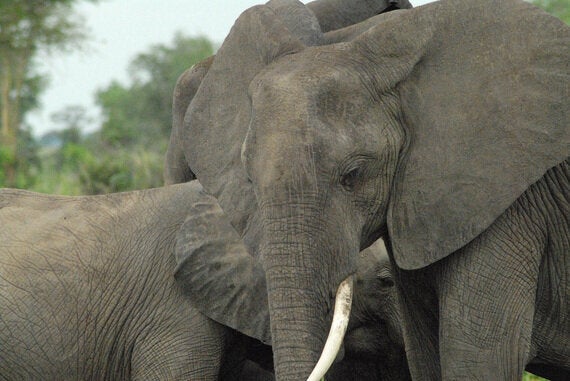
The global trade in elephant ivory requires our focused attention if the world's largest land mammal is to survive past the next 12 years. But African elephants (and let's not forget their Asian counterparts) are not only under threat due to rising demand for their tusks.
2012 has been widely acknowledged as the worst year for African elephants since the 1989 international trade ban for ivory came into force. It is estimated that, during this 12 month period, around 36,000 elephants were illegally slaughtered for their ivory in Africa alone.
The scale of elephant poaching has now reached such levels that it is once again endangering wild populations. Although no one knows exactly how many are left, some experts believe that there could be as few as 250,000 of these amazing creatures left remaining in Africa.
And it is not just African elephants that are at current risk of extinction as a result of consumer demand for their ivory. Increasingly, their smaller Asian relatives are also being targeted by poachers and have experienced significant population declines in recent decades.
Geographic location aside, although a major concern deserving of international action, it is important we recognize that the illegal ivory trade alone is not solely responsible for dwindling wild elephant numbers.
Current human demand also extends to elephant meat. This is not just a local subsistence issue. Elephant meat bound for Fresno California was seized by Thai enforcement officials in May 2103 and is just one example of the international demand for this 'exotic flavour'.
Elephants are also the unwanted object of many a trophy hunters' affections. As a result, each year they are stalked and killed (both legally and illegally) so that an obligatory photo opportunity can ensue, before their heads are stuffed and mounted on the wall.
Juvenile elephants are removed from the wild for use as 'working' animals. These unfortunate individuals may well end up assisting their owners by hauling lumber. Alternatively, they may be sent to 'elephant camps' providing tourists with an up close and personal interaction.
But not all elephants are stolen from the wild in order to generate a profit. If a large, powerful animal becomes attracted to human food sources, destruction of property often follows. This, combined with occasional attacks on humans, creates fear and hostility that rarely ends well for these 'nuisance' animals.
Of course, the rapid and relentless pace of habitat loss only serves to exacerbate these threats to wild elephant survival. War and political instability are also causing people to move into previously unoccupied elephant habitat. Consequently, many elephants find themselves living in close proximity to humans.
Struggling in the face of all this adversity, the horizon for wild elephant populations is a bleak one. Historic deals such as the agreement made between African and Asian nations to crack down on ivory trafficking are a huge leap forward in the right direction.
However, if we are to be successful in our efforts to preserve our planets remaining pachyderms it is vital that we recognize and take steps to adequately address all of the current threats to their continued survival.